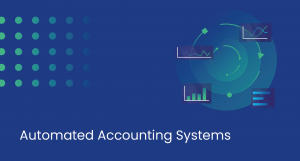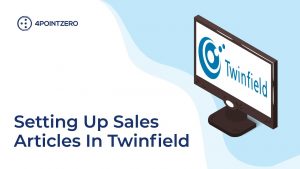Fixed assets are an important part of many businesses. They are the long-term assets that a company owns and used to generate revenue. They include buildings, machinery, vehicles, furniture and equipment, among others. Keeping track of fixed asset register is crucial for accounting purposes, tax reporting and insurance coverage. Automating the production of a fixed asset using automation software solutions can bring many benefits to businesses. Not only can it save time and resources, but it can also reduce errors and provide a more accurate and up-to-date record of a company’s assets.
Fixed Asset Register
A fixed asset register is a list of a company’s fixed assets. It includes details such as the asset’s purchase date, purchase price, depreciation rate, and current value. This information is used for accounting and tax purposes and helps companies track their assets over time. 4pointzero are able to integrate cloud-based automation software into your business that offers a range of features for you to manage your fixed assets efficiently. It enables you to record and track your assets’ acquisition details, depreciation values, maintenance schedules and disposal information.
Traditionally, fixed asset registers were maintained manually using spreadsheets or paper-based systems. This process requires a lot of effort, is time-consuming and prone to errors or misinterpretation of data. However, with the advancement of technology, businesses can now automate the production of their fixed asset register using cloud-based accounting solutions, which 4pointzero are able to implement for you. Our automated systems can save you time by reducing the need for manual data entry and reconciliation, thus eliminating these errors by ensuring accurate data entry and calculations.
By automation software solutions your fixed asset register, you can also reduce the costs associated with manual record-keeping such as labour costs and printing expenses.
The first step in automating the production of a fixed asset register is to ensure that all relevant asset data is captured and stored in a central location. This can be achieved by using a cloud-based integrated business system with 4pointzero. This software gives your business the functionality to record and track all of their assets in one place, making it easy to access and update asset information.
Once all asset data is stored in 4pointzero’s integrated software, the next step is to set up depreciation schedules. Depreciation is the reduction in the value of an asset over time due to wear and tear, obsolescence, or other factors. It is important to accurately calculate depreciation rates for each asset in order to maintain an up-to-date fixed asset register. Our software makes it easy to set up depreciation schedules by allowing your business to select from a range of depreciation methods, including straight-line, declining balance, and sum-of-the-years’ digits. Once a depreciation method is selected, the software will automatically calculate the depreciation rate and update the asset’s value accordingly. Recording maintenance schedules for each asset is also essential in ensuring they remain in good working condition throughout their useful life.
In addition to generating reports, 4PointZero’s solutions also provides a range of other features that can help your business automate the production of its fixed asset register. For example, the software can be set up to automatically calculate and update depreciation rates based on predefined schedules.
It can also be used to track asset movements, such as transfers between locations or departments, and to record maintenance and repair history. These features help businesses keep track of their assets and ensure that their fixed asset register is always up-to-date.
The automated accounting software that 4pointzero can implement for your business, also has the ability to support you with recording asset disposal information. When it’s time for an asset disposal, either through sale or scrapping off as obsolete equipment, you will have the ability to record all relevant disposal information like date sold/scrapped off/sold off/selling price/disposal cost/ gain or loss made during disposal, within our software solutions. This will make certain that they don’t appear anymore in future reports generated from them, making it a tidy record keeping process for your fixed asset management.
Another key feature of the accounting solutions that 4pointzero can integrate into your business, is their ability to generate reports. Reports are essential for tracking assets over time and can be used for ensuring compliance with legal requirements such as tax regulations and financial reporting standards. The range of reports available from the accounting solutions that 4pointzero provide, include asset listings, depreciation schedules, and asset valuations. These reports can be customised to meet the specific needs of your business and can be exported in a variety of formats, including Excel and PDF. This makes it easier for your business to share asset information with stakeholders and other departments.
Finally, it is important to ensure that all asset data is continuously accurate and complete. This can be achieved by implementing regular audits of the fixed asset register. The software that 4pointzero installs includes a range of auditing tools, such as asset tagging and scanning, that can be used to verify asset information and ensure that it is up-to-date.
In conclusion, automating the production of a fixed asset register using software integrated by 4pointzero into your business can bring many benefits to you over traditional manual methods. By storing all asset data in a central location, setting up depreciation schedules, recording maintenance schedules, disposal information, generating automated reports, and using a range of other features, your business can save time and resources, reduce errors, and maintain an up-to-date record of your assets. Regular audits of the fixed asset register can help ensure that all asset data is accurate and complete too. If you are ready to automate and streamline process for your fixed asset register and save yourself time and money, contact 4pointzero today!
Frequently Asked Questions (FAQ)
A fixed asset register is a comprehensive record or database that contains detailed information about an organization’s tangible assets. It includes essential details such as asset descriptions, purchase dates, costs, depreciation methods, and useful life. Maintaining a fixed asset register helps companies effectively manage their assets and facilitates accurate financial reporting.
How can a fixed asset register benefit financial reporting?
A fixed asset register plays a vital role in financial reporting by ensuring accurate and reliable asset information. By having a detailed record of assets, including their costs, depreciation, and useful life, businesses can calculate depreciation expenses, assess asset value, and determine the impact of asset impairment on financial statements. This information is essential for preparing financial reports, such as balance sheets and income statements, which provide stakeholders with insights into the company’s financial health.
Why is a fixed asset register important for businesses?
A fixed asset register is crucial for businesses because it provides a centralized and organized overview of their tangible assets. By maintaining a fixed asset register, companies can easily track, monitor, and manage their assets throughout their lifecycle. It enables accurate financial reporting, aids in tax compliance, supports budgeting and forecasting, and helps businesses make informed decisions regarding asset maintenance, replacement, or disposal.
What is a fixed asset register in accounting?
A fixed asset register in accounting is a detailed record that tracks and documents an organization’s tangible assets, including their purchase dates, costs, depreciation methods, and useful life. It helps manage and report on these assets accurately.
How to maintain fixed asset register?
To maintain a fixed asset register, ensure regular updates by recording new asset additions, disposals, and changes in asset status. Include key details like asset descriptions, purchase information, depreciation methods, and maintenance history. Regularly reconcile the register with physical asset counts to ensure accuracy.



